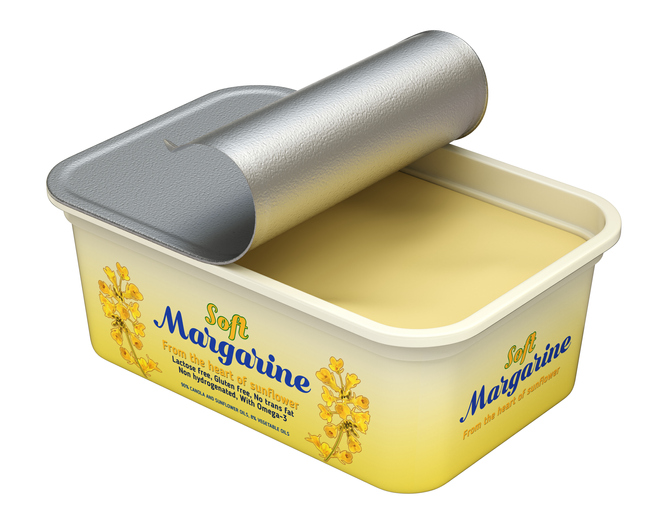Butter is a lightly processed dairy fat, formed into bricks, and shipped into stores. But butter is relatively expensive, leading to the development of butter-like margarine in the 19th century. Like butter, it’s made from fat—generally some kind of vegetable oil. Unlike butter, it requires a pretty lengthy and science-heavy process to make.

Starts as oil
While butter is made from churned cream, margarine starts life as an oil, be it safflower, corn, soybean, or another kind. The first step to make margarine at a processing plant: A caustic soda solution is applied to the raw oil to remove “free fatty acids,” which are inconsistent molecules that just muck up the margarine-making process. Once those are removed, the oil is mixed with hot water for cleaning, then the water is separated out so the oil can “dry” (leaching out the rest of the water) under a hot vacuum.
Absorbing impurities
Next, the oil is sent to another vacuum chamber, where the oil is bleached with a chemical solution and/or charcoal, which absorbs impurities.
The liquid base
At the same time, a liquid base is prepared. It’s water, milk, or, soy, and it bulks up the margarine. First step: It’s cleaned, possibly pasteurized, so as to eliminate any bacteria hiding out.
Hydrogenation
Now the oil undergoes a process called hydrogenation, which gives it a consistent, semi-solid, butter-like consistency. While the oil is pressurized, hydrogen in gas form is mixed into the oil, and it binds with the fat molecules. Not only does it make the oil feel like butter, it increases its melting point (adding to shelf stability) and also makes the end product less likely to oxidize (and spoil).
Mixing it up
Meanwhile, whatever the chosen liquid base is mixed with salt and lecithin (a fat found in corn and eggs), which emulsifies the liquid into a mayonnaise-like concoction. Then the “continuous flow process” happens—that liquid mixture comes out of a tank while the oils in another tank emerge, slowly combining into a third tank that emulsifies everything while it blends together. The whole time, temperatures of the ingredients are maintained at a warm 100 degrees F.
Getting colder
Next, the emulsion that will soon be margarine is slowly cooled, as it travels through a series of three tubes of increasingly lower temperature over the course of just two minutes. After that time has passed, the butter-esque stuff has gone from 100 degrees to 50 degrees and is sent into a tank where it’s left to rest and cool into a semi-solid, along with some occasional automated mixing.
Packed and shipped
After some coloring and quality control to make sure everything is as it should be, the margarine is packed and shipped.







